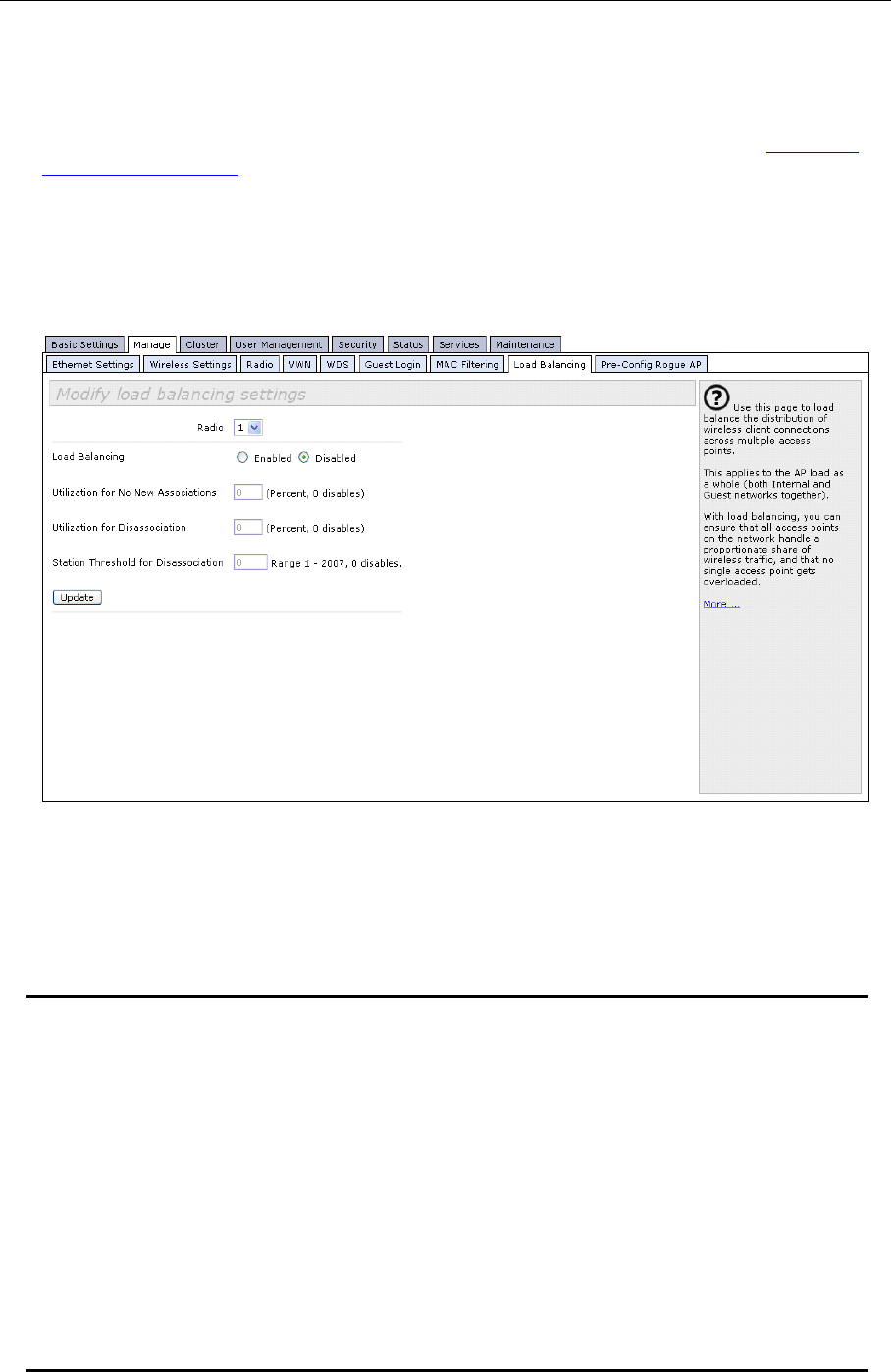
AT-TQ2403 Management Software User's Guide 117
Load Balancing and QoS
Load balancing also plays a part in contributing to Quality of Service (QoS) for Voice Over IP (VoIP) and
other such time-sensitive applications competing for bandwidth and timely access to the air waves on a
wireless network. For more information about configuring your network for QoS, see “Configuring
Quality of Service (QoS)”.
Navigating to Load Balancing Settings
On the Administration UI, navigate to the Manage > Load Balancing tab, and update the fields as
described in the next section.
Figure 45: Load Balancing Settings Page
Configuring Load Balancing
To configure load balancing, enable Load Balancing and set limits and behavior to be triggered by a
specified utilization rate of the access point.
Note:
E
ven when clients are disassociated from an AP, the network will still provide
continuous service to client stations if another access point is within range so that
clients can re-connect to the network. Clients should automatically retry the AP they
were originally connected to and other APs on the subnet. Clients who are
disassociated from one AP should experience a seamless transition to another AP on
the same subnet.
Load Balancing settings apply to the AP load as a whole. When Guest access is enabled,
the settings apply to both Internal and Guest networks together.
Load Balancing settings apply to both radios but the load of each radio is calculated
independently and includes both the Internal and Guest network (when Guest access is
enabled).


















